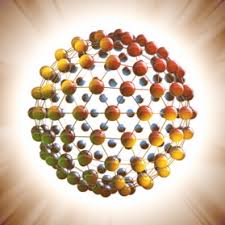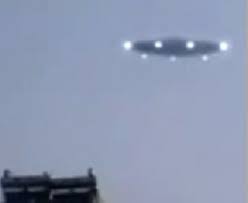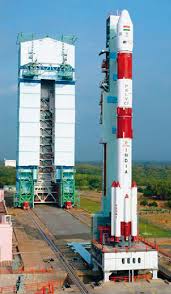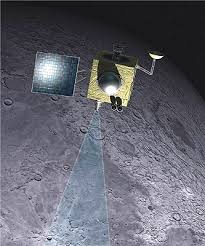Thursday, November 12, 2009
'Stellar Nurseries'
The findings show that "stellar nurseries" within the first galaxies gave birth to stars at a much more rapid rate than previously expected, the researchers from Durham's Institute for Computational Cosmology revealed.
The research looked back 12.5 billion years to one of the most distant known galaxies, about one billion years after the Big Bang.
Using a technique called gravitational lensing -- where distant galaxies are magnified using the gravity of a nearby galaxy cluster -- the scientists observed the rapid bursts of star formation in the galaxy called MS1358arc.
Within the star-forming regions, new stars were being created at a rate of about 50 stars per year -- around 100 times faster than had been previously thought.
The researchers, who say their work represents the most detailed study of a galaxy at such a young age, believe the observed galaxy is typical of others in the early Universe.
They say the galaxy, which measures 6,000 light years across, also has all the characteristics that would allow it to eventually evolve into a galaxy such as our Milky Way, giving an insight into how our sun and galaxy formed.
The Durham researchers based their findings on observations from the Gemini North telescope, based in Hawaii, and NASA's Hubble and Spitzer Space Telescopes. The research appears in the Monthly Notices of the Royal Astronomical Society. The research was funded by the Royal Astronomical Society.
Lead author Dr Mark Swinbank, in the Institute for Computational Cosmology, at Durham University, said: "The runaway effect in this galaxy suggests it is growing much faster than expected.
"Given the size of the star forming regions, we would expect it to be forming stars at the rate of about one sun per year, but it seems to be much more active than that.
"We think this galaxy is fairly typical of galaxies at this time and we expect that the Milky Way once looked like this as it formed its first stars.
"In effect we are seeing the first generation of stars being born in a galaxy like the Milky Way. This gives unique insight into the birth of our own galaxy."
The researchers say most of the observed stars eventually exploded as supernovae, spewing debris back into space where it formed into new stars
Dr Swinbank added: "In this respect these stars are the seeds of future star formation in the Universe."
Royal Astronomical Society President Professor Andy Fabian said: "It is exciting to see such a detailed picture of a very distant galaxy.
"This pioneering work shows what our own galaxy might have looked like when it was a tenth of its present age."
Saturday, November 7, 2009
Friday, October 2, 2009
NASA CRASH THE MOON??
"The cross team concluded that Cabeus provided the best change for meeting its mission goas," mission managers said in a statement. The news comes less that a week after scientists announced the discovery of water on the moon in the form of water molecules bound to the lunar dirt.
Cabeus is a large crater about 60 miles (98 km) in diameter that sits at 84.0 degree south, 35.5 degrees west at the moon's south pole. It has two nearby satellite craters: the 25-mile (40 km) wide Cabeus A and Cabeus B, which is about 38 miles (61 km) in diameter. The cross probe, officially called the lunar Crater Observation and Sensing Satellite, is a pair of vehicles headed for one of the most watched cosmic collisions.
Friday, September 11, 2009
Nanotechnology
N
 anotechnology refers broadly to field of applied science and technology whose unifying theme is the control of matter on the molecular level in scales smaller than 1 micrometre, normally 1 to 100 nanometers, and the fabrication of devices within that size range. It is a highly multidisciplinary field, drawing from fields such as applied physics, materials science, colloidal science, device physics, supermolecular chemistry, and even mechanical and electrical engineering.
anotechnology refers broadly to field of applied science and technology whose unifying theme is the control of matter on the molecular level in scales smaller than 1 micrometre, normally 1 to 100 nanometers, and the fabrication of devices within that size range. It is a highly multidisciplinary field, drawing from fields such as applied physics, materials science, colloidal science, device physics, supermolecular chemistry, and even mechanical and electrical engineering.Much speculation exists as to what new science and technology may result from these lines of research. Nanotechnology can be seen as an extension of existing sciences into the nanoscale, or as a recasting of existing sciences using a newer, more modern them. Two main approaches are used in nanotechnology. In the "bottom-up" approach, materials and devices are built from molecular components which assemble themselves chemically by principles of molecular recognition. In the "top-down"approach, nono-objects are constructed from larger entities without atomic-level control.
The impetus for nanotechnology comes from a renewed interest in colloidal science, coupled with a new generation of analytical tools such as the atomic force microscope (AFM), and the scanning tunneling microscope (STM). Combined with refined processes such as electron beam lithography and molecular beam epitaxy, these instruments allow the deliberate manipulation of nanostructures, and led to the observation of novel phenomena.
Despite the great promise of numerous nanotechnologies such as quantum dots an nonotubes, real commercial applications have mainly used the advantage of colloidal nanoparticles in bulk from, such as suntan lotion, cosmetics, protective coatings, and stain resistant clothing. Modern synthetic chemistry has reached the point where it is possible to prepare small molecules to almost any structure.
These methods are used today to produce a wide variety of useful chemical such as pharmaceuticals or commercial polymers. The abillity raises thequestion of extending this kind of control to the next-larger level, seeking methods to assemble these single molecules into supramolecular assemblies consisting of many molecules arranged in a well defined manner. These approaches utilize the concepts of molecular self-assembly and/or supramolecular chemistry to automatically arrange themselves into some useful conformation through a bottom-up approach.
Monday, September 7, 2009
UFO found in China
 entist claim they filmed an unidentified flying object (UFO) for about 40 minutes, during the solar eclipse on July 22. Researchers at the Purple Mountain Observatory in Nanjing have said that they will spend the next 12 months studying the footage before reaching any conclusions.
entist claim they filmed an unidentified flying object (UFO) for about 40 minutes, during the solar eclipse on July 22. Researchers at the Purple Mountain Observatory in Nanjing have said that they will spend the next 12 months studying the footage before reaching any conclusions.In an interview with sina.com, Ji hai-sheng, the director of the observatory, said that scientists would not be speculating publicly on the nature of what was captured on film until it had been properly studied. "Purple Mountain Observatory and Chinese Academy of Sciences said that during the July 22 total solar eclipse observation, China had discovered near the sun an unidentified object and its physical nature remains to be further studied," the Telegraph quoted him as saying.
"Currently manpower is being organised to deal with this data, complete the data a
 nalysis and reveal the scientific result and this will take at least one year's time to finalise," he added.
nalysis and reveal the scientific result and this will take at least one year's time to finalise," he added.The incident comes after a series of UFO sighting i China, which led to the object being filmed by students in Diqing.
Chandrayaan I
 ndrayaan II is now in the offing, as Dr. K. Kasturirangan, former ISro Chief, has stated that even with the failed previous moon mission, much technology and scientific gains have been achieved for the successful launch of second such satellite by India. Claiming that Chandrayaan-I was a successful mission, the scientist-turned policymaker said, it helped mapping 50 per cent of the moon surface and 90 per cent of the mineralogy of the celestial body.
ndrayaan II is now in the offing, as Dr. K. Kasturirangan, former ISro Chief, has stated that even with the failed previous moon mission, much technology and scientific gains have been achieved for the successful launch of second such satellite by India. Claiming that Chandrayaan-I was a successful mission, the scientist-turned policymaker said, it helped mapping 50 per cent of the moon surface and 90 per cent of the mineralogy of the celestial body.Dr. Kasturirangan was of the view that the mission was complete as far as infrared coverage and radiation monitoring dosage was concerned. For the first time a satellite cold come as low as 100 km from the moon surface, he said, adding that the earlier missions could reach up to 200km. "This gave us the opportunity to monitory every aspect of the moon surface," he said. Even the failed mission gave scientists substantial knowledge to take corrective steps for the next mission target the broadest of achievements.

Dr. Kasturirangan, however, claimed that the quality of imagery gathered from Chandrayaan-I is comparable with best in the world so far achieved. "In a period of 5 to 10 years the country has a plan to go aggressively in space sciences, Altogether 30 small satellites are in the pipe line and one or tow large satellites are in the process of launch," Dr Kasturirangan said.
The proposal to send this mission was approved by the government in November 2003 and abut Rs. 386 crores was spend on the mission from the conception to the execution stage. The design life of this spacecraft was two years, meaning it was expected to remain in the orbit at least up to October 2010
Saturday, September 5, 2009
Black Box
On January 3 1, 2000, Alaska Airlines Flight 261 departed Puerto Vallarta,Mexico, heading for Seattle, WA, with a short stop scheduled in San Francisco, CA. Approximately one hour and 45 minutes into the flight, a problem was reported with the plane's stabilizer trim. After a 10-minute battle to keep the plane airborne, it plunged into the Pacific Ocean off the coast of California. All 88 people on board were killed.
1, 2000, Alaska Airlines Flight 261 departed Puerto Vallarta,Mexico, heading for Seattle, WA, with a short stop scheduled in San Francisco, CA. Approximately one hour and 45 minutes into the flight, a problem was reported with the plane's stabilizer trim. After a 10-minute battle to keep the plane airborne, it plunged into the Pacific Ocean off the coast of California. All 88 people on board were killed.
With any airplane crash, there are many unanswered questions as to what brought the plane down. Investigators turn to the airplane's flight data recorder (FDR) and cockpit voice recorder (CVR) also known as "black boxes," for answers. In Flight 261, the FDR contained 48 parameters of flight data, and the CVR a little more than 30 minutes of conversation and other audible cockpit noises.
Like that only Andhrapradesh (India) Chief Minsters death mystery also will be know after decoding black box which is with Investigation team. The Karnool District officials surrender the Black box and cockpit voice recorder to Investigation team. Results will be know after two three days.
